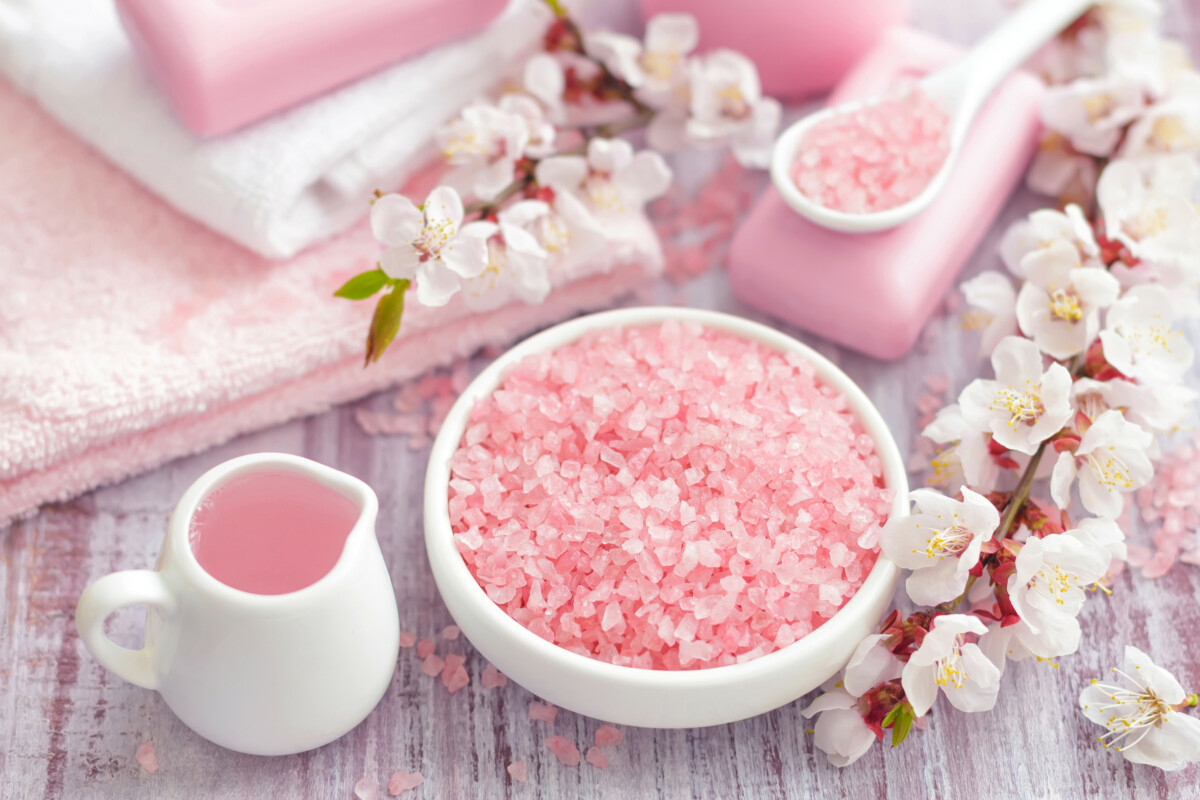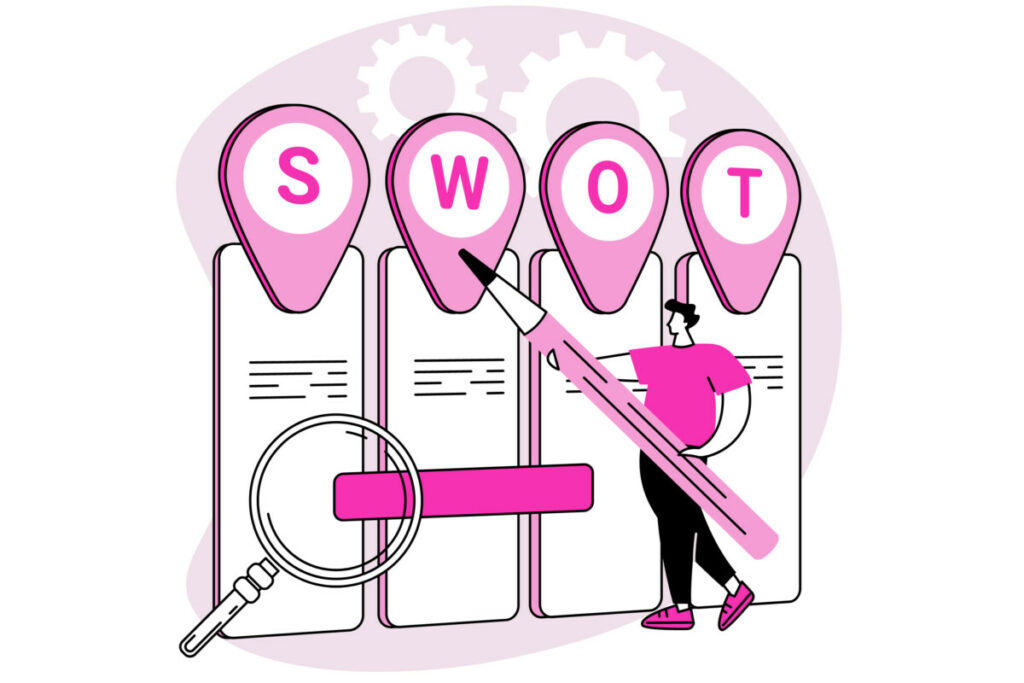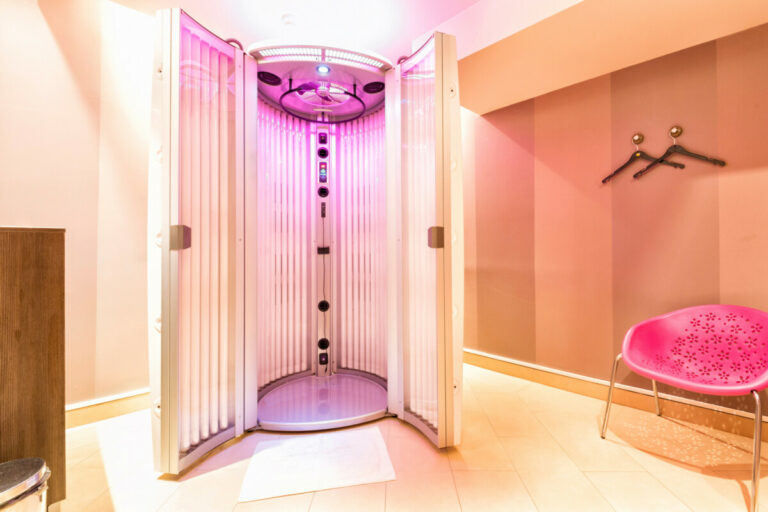How to Write a Spa Business Plan (24 Simple Steps)

Are you considering opening a spa business? Writing a business plan is a crucial step in the process of starting a business.
A well-written business plan can help you secure funding, attract investors, and guide you through the early stages of your business.
Whether you’re launching a day spa, medical spa, esthetician spa, or any other kind, this comprehensive article is the ultimate guide that will help you write your business plan.
1. Executive Summary

Brief Overview of the Spa
Your spa business plan’s executive summary should begin with a brief overview of your spa. This section should describe the type of spa you plan to open, the services you will offer, and the target market you plan to serve. You should also include information about the location of your spa and any other relevant details.
Mission and Vision Statements
Your spa’s mission and vision statements should be included in the executive summary of your business plan. These statements should be concise and clearly define your spa’s purpose and goals. Your mission statement should describe what your spa does and why it exists. Your vision statement should describe what you hope to achieve in the future.
Key Objectives
The key objectives section of your executive summary should outline the goals you hope to achieve with your spa business. These objectives should be specific, measurable, achievable, relevant, and time-bound. You should also include information about how you plan to achieve these objectives and what resources you will need.
In summary, the executive summary of your spa business plan should provide a brief overview of your spa, including the services you will offer and the target market you plan to serve. It should also include your spa’s mission and vision statements and outline your key objectives.
2. Services Offered

Detailed List of All Spa Services
When writing a spa business plan, it is important to provide a detailed list of all the services that your spa will offer. This will help potential investors and customers understand the scope of your business. Your list should include all the services that you plan to offer, including massage, facials, body treatments, and more.
Here is an example of a detailed list of spa services:
| Service | Description |
|---|---|
| Swedish Massage | A relaxing massage that uses long strokes, kneading, and circular movements on the topmost layers of muscles. |
| Deep Tissue Massage | A therapeutic massage that focuses on realigning deeper layers of muscles and connective tissue. |
| Hot Stone Massage | A massage that uses smooth, heated stones to help warm up and relax tight muscles. |
| Facial | A treatment that cleanses, exfoliates, and nourishes the skin. |
| Body Scrub | A treatment that exfoliates and moisturizes the skin. |
| Body Wrap | A treatment that involves wrapping the body in a mixture of herbs, minerals, and other ingredients to detoxify and hydrate the skin. |
Descriptions and Pricing
Once you have a detailed list of your spa services, you will need to provide descriptions and pricing for each service. Your descriptions should be clear and concise, and should highlight the benefits of each service.
Here is an example of a service description and pricing:
Swedish Massage
This relaxing massage uses long strokes, kneading, and circular movements on the topmost layers of muscles. It can help reduce muscle tension, improve circulation, and promote relaxation.
Price: $80 for 60 minutes
Unique Selling Propositions
Your spa business plan should also include your unique selling propositions (USPs). These are the things that set your spa apart from your competitors. Your USPs could be anything from a unique service offering to exceptional customer service.
Here are some examples of USPs:
- Use of all-natural and organic products
- Personalized treatment plans for each client
- Exceptional customer service and attention to detail
- Convenient location and flexible hours
By highlighting your USPs, you can differentiate your spa from the competition and attract more customers.
3. Products Offered

List of Products for Sale
To create a successful spa business plan, you need to list the products you will offer to your customers. These products could be anything from skincare, hair care, massage oils, candles, and more. It’s essential to research and understand your target market’s preferences and needs before finalizing the list of products to be offered.
Creating a list of products for sale will help you keep track of your inventory, manage your budget, and ensure that you always have enough stock to meet your customers’ demands. You can also use this list to set goals for your sales and marketing strategies.
Suppliers or Brands Associated
When creating a spa business plan, it’s essential to identify the suppliers or brands associated with the products you will offer. Research and identify reliable and high-quality suppliers who can provide you with the products you need at a reasonable price.
It’s also important to consider the brands you will associate with your spa. Choose brands that align with your values and target market’s preferences. You can also consider creating your own brand of products to stand out from the competition.
Pricing Strategy
Your pricing strategy is a crucial aspect of your spa business plan. You need to set prices that are competitive and align with your target market’s budget. Consider the cost of the products, overhead expenses, and profit margins when setting your prices.
You can also consider offering package deals or discounts to attract customers and increase sales. It’s essential to regularly review your pricing strategy to ensure that it’s still competitive and profitable for your spa business.
4. Treatment and Therapies Techniques

Overview of the Different Methodologies and Treatments Offered
When writing your spa business plan, it is important to consider the different treatment and therapy techniques that you will offer to your clients. The following are some of the popular treatments and methodologies that you may consider:
Massage Therapy
Massage therapy is one of the most popular treatments offered in spas. It involves the manipulation of soft tissues to reduce stress, relieve pain, and improve circulation. There are different types of massage therapy techniques, including Swedish massage, deep tissue massage, hot stone massage, and aromatherapy massage.
Body Treatments
Body treatments are designed to exfoliate, hydrate, and nourish the skin. Some of the popular body treatments include body wraps, body scrubs, and body masks.
Facials
Facials are designed to improve the health and appearance of the skin. There are different types of facials, including deep cleansing facials, anti-aging facials, and acne facials.
Hydrotherapy
Hydrotherapy involves the use of water for therapeutic purposes. Some of the popular hydrotherapy treatments include hydrotherapy baths, hydrotherapy showers, and hydrotherapy pools.
Training and Certification for Each
It is important to ensure that your staff is properly trained and certified to perform the different treatments and therapies offered in your spa. The following are some of the certifications that your staff may need:
Massage Therapy Certification
Your massage therapists should be certified by a recognized organization, such as the National Certification Board for Therapeutic Massage and Bodywork (NCBTMB).
Esthetician License
Your estheticians should be licensed by the state in which your spa is located.
Hydrotherapy Certification
Your hydrotherapy specialists should be certified by a recognized organization, such as the Aquatic Therapy and Rehab Institute (ATRI).
By offering a variety of treatment and therapy techniques and ensuring that your staff is properly trained and certified, you can provide your clients with a high-quality spa experience.
5. Equipment and Technology

Details on Equipment Utilized
When creating a spa business plan, it is important to consider the equipment you will need to provide the best possible experience for your clients. Some of the equipment you may need to consider includes massage tables, chairs, hot stone warmers, towels, and robes. You will also need to consider the type of products you will use, such as oils, lotions, and creams.
It is important to invest in high-quality equipment that is durable and easy to clean. This will ensure that your clients are comfortable and that your equipment lasts for a long time. You may also want to consider purchasing eco-friendly equipment and products to appeal to clients who are environmentally conscious.
Modern Technological Integrations
In addition to traditional equipment, modern technology can also play a significant role in your spa business. For example, you may want to invest in software to manage appointments and client information. This can help you keep track of your schedule and ensure that your clients receive the best possible service.
You may also want to consider incorporating technology into your spa services. For example, you could offer virtual reality experiences or use LED light therapy to enhance your clients’ experience. It is important to stay up-to-date with the latest technological advancements in the spa industry to remain competitive and provide the best possible service to your clients.
Overall, when creating a spa business plan, it is important to consider the equipment and technology you will need to provide the best possible experience for your clients. By investing in high-quality equipment and staying up-to-date with the latest technological advancements, you can create a successful and profitable spa business.
6. Interior Design and Ambiance

Design Philosophy and Considerations for Creating a Relaxing Environment
When designing the interior of your spa, it’s important to keep in mind that your clients are coming to your space to relax and rejuvenate. Your design philosophy should reflect this goal and create an atmosphere that allows your clients to immerse themselves in a peaceful environment.
Consider the following design elements when creating your spa’s ambiance:
- Color palette: Choose soothing colors such as blues, greens, and neutrals to promote a calming atmosphere.
- Materials: Use natural materials like wood, stone, and bamboo to create a connection to nature and promote a sense of tranquility.
- Layout: Arrange your space in a way that flows naturally and allows for easy movement between areas.
- Decor: Use subtle and tasteful decor that adds to the overall ambiance without being distracting.
By keeping these design considerations in mind, you can create a space that feels like a sanctuary to your clients.
Acoustics, Aroma, Lighting, and Furnishings
In addition to the design philosophy, there are other elements that contribute to the overall ambiance of your spa. These include acoustics, aroma, lighting, and furnishings.
- Acoustics: Consider using sound-absorbing materials like curtains, carpets, and acoustic panels to reduce noise and create a peaceful environment.
- Aroma: Use essential oils or candles to create a pleasant and relaxing scent throughout your space.
- Lighting: Use soft, warm lighting to create a calming atmosphere. Consider using dimmer switches to adjust the lighting levels based on the time of day and the services being offered.
- Furnishings: Choose comfortable and stylish furnishings that contribute to the overall ambiance of your spa.
By paying attention to these details, you can create a spa environment that promotes relaxation and rejuvenation for your clients.
7. Market Analysis

Overview of the Spa Industry
The spa industry is a growing market with a global worth of over $120 billion. The industry includes a wide range of businesses, from day spas to resort spas, medical spas, and wellness centers. The spa industry has seen steady growth over the past decade, with a focus on health and wellness becoming a priority for many individuals.
Target Market Description
Your target market for your spa business plan will depend on the type of spa you want to open. However, in general, the spa industry has a broad target market that includes both men and women of all ages. Your target market can be further defined by demographics such as age, gender, income, and location. It is important to research and understand the needs and preferences of your target market to create a successful spa business plan.
Market Trends and Growth Potential
The spa industry is expected to continue to grow in the coming years, with a focus on wellness becoming increasingly important to consumers. Some of the current market trends include the use of natural and organic products, personalized treatments, and technology integration. Additionally, the rise of medical spas and the use of alternative therapies such as acupuncture and aromatherapy are also contributing to the growth of the spa industry. With a focus on providing high-quality services and unique experiences, there is significant growth potential for new businesses in the spa industry.
| Market Statistics | |
|---|---|
| Global Spa Market Worth | $120 billion |
| Expected Industry Growth | 5.7% CAGR |
| Target Market | Men and women of all ages |
| Market Trends | Natural and organic products, personalized treatments, technology integration, medical spas, alternative therapies |
8. Marketing and Sales Strategy

Branding and Positioning
When it comes to branding and positioning your spa business, it’s important to consider your target market and what sets your spa apart from competitors. You want to create a brand that resonates with your ideal customer and communicates the unique benefits of your spa.
To do this, start by defining your brand values and messaging. What do you stand for? What makes your spa special? Once you have a clear brand identity, you can use it to guide all of your marketing efforts, from your website to your social media posts.
Promotion and Advertising Strategies
Promotion and advertising are key components of any successful marketing strategy. To promote your spa, consider offering special deals or packages to attract new customers. You can also partner with other local businesses to cross-promote each other’s services.
In terms of advertising, consider running targeted ads on social media platforms like Facebook and Instagram. You can also invest in local print or online advertising to reach a wider audience.
Sales Techniques and Incentives
Once you’ve attracted potential customers to your spa, it’s important to have effective sales techniques in place to convert them into paying customers. This can include offering personalized recommendations based on their needs and preferences, as well as providing a welcoming and relaxing atmosphere.
Incentives can also be effective in closing sales. Consider offering a discount or free service for customers who refer friends or family to your spa, or for those who book multiple appointments in advance.
By implementing these marketing and sales strategies, you can effectively position your spa business for success and attract a loyal customer base.
9. Management and Organization

Spa’s Organizational Structure
When it comes to writing a spa business plan, the organizational structure is an essential component. It is crucial to have a well-defined organizational structure that outlines the hierarchy of the spa’s management team. This structure should clearly define the roles and responsibilities of each member of the team.
A typical spa organizational structure includes the following management positions:
- Spa Director
- Operations Manager
- Spa Manager
- Front Desk Manager
- Treatment Manager
- Marketing Manager
Roles and Responsibilities of Key Personnel
Each member of the spa’s management team plays a critical role in the success of the business. The Spa Director is responsible for overseeing the overall operations of the spa, while the Operations Manager is responsible for managing the day-to-day operations.
The Spa Manager is responsible for managing the spa’s staff and ensuring that guests receive exceptional service. The Front Desk Manager is responsible for managing the front desk operations, including scheduling appointments, checking guests in and out, and handling customer inquiries. The Treatment Manager is responsible for managing the spa’s treatment services, including hiring and training therapists, managing inventory, and ensuring that treatments are delivered to the highest standards.
The Marketing Manager is responsible for developing and implementing marketing strategies to promote the spa’s services and increase revenue.
Hiring and Training Processes
Hiring the right staff is crucial to the success of any spa business. It is essential to have a comprehensive hiring process in place that includes screening, interviewing, and reference checks. Once hired, new staff members should receive comprehensive training to ensure that they are equipped with the skills and knowledge necessary to provide exceptional service.
Training should cover a range of topics, including customer service, spa treatments, and product knowledge. Ongoing training and development should also be provided to ensure that staff members stay up-to-date with the latest trends and techniques in the spa industry.
In conclusion, a well-defined organizational structure, clear roles and responsibilities, and comprehensive hiring and training processes are essential components of a successful spa business. By implementing these strategies, you can ensure that your spa provides exceptional service and achieves long-term success.
10. Supplier Management

Managing your suppliers is crucial to the success of your spa business. In this section, we will discuss key suppliers, contract negotiation strategies, and inventory management.
List of Key Suppliers
Your spa business will rely on various suppliers to provide you with the products and equipment needed to operate. Some of the key suppliers you will need to consider include:
- Skincare product suppliers
- Massage oil and lotion suppliers
- Equipment suppliers (massage tables, chairs, hot stones, etc.)
- Linen suppliers
- Cleaning and sanitation suppliers
When selecting your suppliers, consider factors such as price, quality, reliability, and customer service. You may also want to consider partnering with suppliers who share your values and commitment to sustainability.
Contract Negotiation Strategies
Negotiating contracts with your suppliers is an important part of managing your costs and ensuring quality. Here are some strategies to consider:
- Research multiple suppliers and compare prices and terms.
- Negotiate on price, delivery times, and payment terms.
- Consider long-term contracts to secure better pricing and ensure consistent supply.
- Include quality control clauses in your contracts to protect your business.
Remember to always keep your business interests in mind when negotiating contracts, but also be fair and respectful to your suppliers.
Inventory Management
Effective inventory management is key to minimizing waste and ensuring you have the products and equipment you need to operate your spa business. Here are some tips for managing your inventory:
- Use inventory management software to track your products and equipment.
- Set minimum and maximum inventory levels to ensure you always have the right amount of stock.
- Conduct regular inventory audits to identify any discrepancies or issues.
- Consider implementing a just-in-time inventory system to reduce waste and save costs.
By effectively managing your suppliers and inventory, you can ensure your spa business runs smoothly and efficiently.
11. Safety and Hygiene

Health and Safety Protocols
When it comes to running a spa, safety and hygiene are of utmost importance. You need to have clear protocols in place to ensure the safety of your clients and staff. Start by developing a health and safety policy that outlines your commitment to providing a safe and healthy environment. This policy should cover everything from fire safety to first aid procedures.
In addition to having a policy, you should also have a plan in place for dealing with emergencies. This plan should include evacuation procedures, emergency contacts, and a list of first aid supplies that you should keep on hand.
Sanitation Procedures
Maintaining a clean and hygienic environment is critical in a spa. You need to have a clear sanitation policy that outlines the procedures for cleaning and disinfecting all equipment and surfaces. This policy should cover everything from cleaning massage tables to disinfecting pedicure tubs.
You should also have a plan in place for dealing with infectious diseases. This plan should include procedures for identifying and isolating clients who may be contagious, as well as procedures for cleaning and disinfecting the affected areas.
Staff Training on Safety
Your staff plays a critical role in maintaining a safe and hygienic environment. It is essential that they are trained on all health and safety protocols and sanitation procedures. Make sure that all staff members are trained on the proper use of cleaning and disinfecting products and equipment.
You should also provide training on how to identify and respond to emergencies. This training should cover everything from identifying the signs of a heart attack to performing CPR.
By having clear health and safety protocols, sanitation procedures, and staff training in place, you can ensure that your spa is a safe and healthy environment for everyone.
12. Accreditations and Certifications

As with any business, obtaining the necessary licenses and certifications is crucial to the success of your spa. This section will cover the different types of accreditations and certifications you may need to consider for your spa business plan.
Necessary Licenses
Before opening your spa, it is important to research and obtain the necessary licenses required by your state or local government. Failure to do so could result in fines or even the closure of your business. Some common licenses you may need to obtain include:
- Business license
- Sales tax permit
- Health department permit
- Building permit
Be sure to research the specific requirements for your location and industry to ensure you have all necessary licenses in place before opening your spa.
Industry Certifications
In addition to necessary licenses, obtaining industry certifications can set your spa apart from competitors and demonstrate your commitment to providing high-quality services. Some common certifications for the spa industry include:
- National Certification Board for Therapeutic Massage and Bodywork (NCBTMB)
- International SPA Association (ISPA)
- Associated Skin Care Professionals (ASCP)
These certifications can provide credibility to your business and help attract clients who value qualified and knowledgeable professionals.
Partnership or Memberships
Partnering with other businesses or becoming a member of industry organizations can also provide benefits for your spa. Some partnerships and memberships to consider include:
- Partnering with local hotels or resorts to offer package deals
- Joining a local chamber of commerce to network with other businesses
- Becoming a member of the ISPA or other industry organizations to stay up-to-date on industry trends and best practices.
These partnerships and memberships can help increase your visibility and credibility within the community and industry.
In summary, obtaining necessary licenses, industry certifications, and partnerships or memberships can provide numerous benefits for your spa business. Be sure to research and consider these options when developing your spa business plan.
13. Financial Plan

Projected Income Statement
Your projected income statement should provide a detailed account of your expected revenue and expenses for the upcoming year. This should include a breakdown of your revenue streams, such as services, retail sales, and memberships, and your expected costs, including labor, supplies, and rent.
To create your projected income statement, you will need to estimate your revenue and expenses based on your business plan and market research. Be sure to factor in any seasonal fluctuations or other trends that may affect your revenue.
Balance Sheet
Your balance sheet is a snapshot of your business’s financial health at a specific point in time. It should include your assets, liabilities, and equity. Assets include things like cash, inventory, and equipment, while liabilities include debts and other obligations.
To create your balance sheet, you will need to compile a list of your assets and liabilities. Be sure to include any loans or other debts that you may have, as well as any equity that you have invested in your business.
Cash Flow Statement
Your cash flow statement tracks the movement of cash in and out of your business over a given period of time. It should include your cash inflows, such as revenue from services and retail sales, as well as your cash outflows, such as rent, supplies, and labor costs.
To create your cash flow statement, you will need to track your cash inflows and outflows on a regular basis. This will help you identify any cash flow issues and make adjustments as needed.
Overall, your financial plan is a crucial component of your spa business plan. It will help you identify potential financial challenges and opportunities, and ensure that you have the resources you need to succeed.
14. Funding Request

Amount of Funding Required
To successfully launch your spa business, you will need to secure funding. The amount of funding required will depend on several factors, including the size of your spa, the services you plan to offer, and the location of your business. Based on your business plan, you estimate that you will need $500,000 to get your spa up and running.
Use of Funds
The use of funds will be broken down as follows:
- $250,000 for leasehold improvements, such as building out the space, installing plumbing and electrical systems, and purchasing equipment and furniture.
- $150,000 for working capital, including salaries, marketing, and other operational expenses.
- $50,000 for inventory, including spa products, towels, and linens.
- $50,000 for contingencies, such as unexpected expenses or emergencies.
Expected Return on Investment
As an investor, you want to know what kind of return you can expect on your investment. Based on market research and financial projections, you might estimate that your spa business will generate $1 million in revenue in its first year, with a net profit margin of 20%. This means that you expect to make $200,000 in profit in your first year of operation. You plan to reinvest a portion of these profits back into the business to support growth and expansion.
In summary, you are seeking $500,000 in funding to launch your spa business. The funds will be used for leasehold improvements, working capital, inventory, and contingencies. Based on market research and financial projections, you expect to generate $1 million in revenue in your first year of operation, with a net profit margin of 20%.
15. SWOT Analysis

When creating a spa business plan, it’s important to conduct a SWOT analysis to identify the strengths, weaknesses, opportunities, and threats of your business. This analysis will help you to develop a strategy that takes advantage of your strengths and opportunities while mitigating your weaknesses and threats.
Strengths
Your spa’s strengths are the internal factors that give you a competitive advantage. These could include your location, your reputation, the quality of your services, and the expertise of your staff. It’s important to identify your strengths so that you can leverage them in your marketing and business strategy.
Weaknesses
Your spa’s weaknesses are the internal factors that put you at a disadvantage compared to your competitors. These could include a lack of resources, outdated technology, or poor management. Identifying your weaknesses is important so that you can address them and turn them into strengths.
Opportunities
Your spa’s opportunities are the external factors that you can capitalize on to grow your business. These could include changes in the market, new technologies, or emerging trends. By identifying opportunities, you can adjust your business strategy to take advantage of them and stay ahead of the competition.
Threats
Your spa’s threats are the external factors that could negatively impact your business. These could include economic downturns, new competitors, or changes in regulations. By identifying threats, you can develop contingency plans to mitigate their impact on your business.
In conclusion, conducting a SWOT analysis is an important step in creating a spa business plan. By identifying your strengths, weaknesses, opportunities, and threats, you can develop a strategy that takes advantage of your strengths and opportunities while mitigating your weaknesses and threats.
16. Legal Structure and Compliance

When starting a spa business, it’s important to consider the legal structure of your business and ensure that you are in compliance with all local and state regulations. This will help you avoid legal issues and fines down the road.
Always consult legal and professional advice.
Business Legal Structure
Choosing the right legal structure for your spa business is important. It will affect your taxes, liability, and the way you run your business. Some common legal structures for small businesses include sole proprietorships, partnerships, LLCs, and corporations.
Each structure has its own advantages and disadvantages. For example, a sole proprietorship is the simplest and least expensive legal structure, but it also offers the least amount of liability protection. On the other hand, a corporation offers the most protection but is more complex and expensive to set up.
Before choosing a legal structure, it’s important to consult with a lawyer or accountant to determine which structure is best for your spa business.
Compliance with Local and State Regulations
In addition to choosing the right legal structure, you must also comply with all local and state regulations. This includes zoning laws, health and safety regulations, and employment laws.
For example, you may need to obtain a business license and a permit from your local government to operate a spa business. You may also need to comply with health and safety regulations, such as ensuring that your spa is clean and sanitary.
It’s important to research and understand all of the regulations that apply to your spa business, and to ensure that you are in compliance with them.
Necessary Permits and Licenses
In addition to complying with regulations, you may also need to obtain certain permits and licenses to operate your spa business. This may include a cosmetology license, a massage therapy license, or a liquor license if you plan to serve alcohol.
It’s important to research and understand all of the permits and licenses that apply to your spa business, and to obtain them before opening your doors. Failure to obtain the necessary permits and licenses can result in fines and legal issues.
Overall, ensuring that your spa business is in compliance with all legal and regulatory requirements is essential for success. By choosing the right legal structure, complying with regulations, and obtaining the necessary permits and licenses, you can set your spa business up for long-term success.
17. Customer Engagement and Retention

As a spa owner, it is crucial to focus on customer engagement and retention to ensure the success of your business. Here are some strategies you can use to keep your customers coming back for more.
Customer Service Strategies
Providing exceptional customer service is key to building a loyal customer base. Make sure your staff is well-trained in customer service and knows how to handle any issues that may arise. Here are some customer service strategies to consider:
- Greet customers warmly and make them feel welcome.
- Provide personalized service and recommendations based on their needs.
- Follow up with customers after their visit to ensure their satisfaction.
- Provide a clean and comfortable environment.
Loyalty Programs
Loyalty programs are a great way to incentivize customers to return to your spa. Consider implementing a points-based system where customers earn points for each visit or purchase. These points can then be redeemed for discounts or free services. Here are some tips for creating an effective loyalty program:
- Keep it simple and easy to understand.
- Offer meaningful rewards that customers actually want.
- Make it easy for customers to track their points and rewards.
Feedback Mechanisms
Feedback from customers can help you identify areas for improvement and make necessary changes to keep them coming back. Here are some feedback mechanisms to consider:
- Offer surveys or comment cards for customers to provide feedback.
- Encourage customers to leave online reviews.
- Respond promptly and professionally to any negative feedback.
By implementing these customer engagement and retention strategies, you can build a loyal customer base and ensure the success of your spa business.
18. Sustainability and Social Responsibility

As a responsible spa business owner, it is important to incorporate sustainability and social responsibility into your business plan. By doing so, you can not only help the environment, but also make a positive impact on the community and society as a whole. Here are some ways to achieve this:
Environmental Initiatives
Implementing eco-friendly practices can help reduce your spa’s carbon footprint and contribute to a healthier planet. Consider the following environmental initiatives:
- Use energy-efficient lighting and equipment
- Install low-flow faucets and showerheads to conserve water
- Use organic and biodegradable products
- Recycle and properly dispose of waste
- Use eco-friendly cleaning products
- Encourage clients to bring their own towels and robes to reduce laundry
Community Involvement
Getting involved in your local community can help build relationships and promote your spa’s brand. Consider the following community involvement initiatives:
- Partner with local charities and organizations to donate a portion of profits to a good cause
- Host events and workshops to promote health and wellness in the community
- Sponsor local sports teams or events
- Participate in local festivals and fairs
Ethical Sourcing
Ensuring that your spa’s products are ethically sourced can help promote fair trade and support local communities. Consider the following ethical sourcing initiatives:
- Use products that are cruelty-free and not tested on animals
- Use products that are sustainably sourced and not harmful to the environment
- Work with suppliers who pay fair wages and provide safe working conditions for their employees
- Source products from local businesses to support the local economy
By incorporating sustainability and social responsibility into your spa business plan, you can make a positive impact on the environment, community, and society.
19. Growth Strategy

Your spa business plan should include a growth strategy that outlines how you plan to expand your business in the future. This section will help investors understand how you plan to increase revenue and market share over time.
Expansion Plans
One way to grow your spa business is to open additional locations. When considering expansion, it’s important to research potential markets and determine if there is a demand for your services. You’ll also need to consider the costs associated with opening a new location, such as rent, equipment, and staffing.
Another option for expansion is to offer additional services at your existing location. For example, you could add a hair salon or nail salon to your spa. This can help attract new customers and increase revenue from existing customers.
Partnership or Collaboration Opportunities
Partnering with other businesses can be a great way to grow your spa business. For example, you could partner with a local hotel to offer spa services to their guests. This can help you reach a new customer base and increase revenue.
Collaborating with other businesses in the wellness industry can also be beneficial. For example, you could partner with a yoga studio to offer package deals that include both yoga classes and spa services.
Franchising, If Applicable
If you have a successful spa business and want to expand quickly, franchising may be an option to consider. Franchising allows you to expand your business without the upfront costs associated with opening new locations.
However, franchising can be a complex process and requires a significant investment of time and resources. You’ll need to develop a franchise model, create training materials, and find qualified franchisees to run your locations.
In conclusion, your growth strategy should be a key part of your spa business plan. By outlining your plans for expansion, partnerships, and franchising (if applicable), you can show investors that you have a clear plan for increasing revenue and market share over time.
20. Risk Management

As with any business, there are potential risks involved in running a spa. It is important to identify these risks and develop strategies to mitigate them to ensure the safety of your clients and employees, as well as protect your business.
Identification of Potential Risks
The first step in risk management is to identify potential risks. This can include anything from slip-and-fall accidents to equipment malfunctions to data breaches. Conduct a thorough assessment of your spa and its operations to identify any areas of potential risk.
Mitigation Strategies
Once potential risks have been identified, develop strategies to mitigate them. This can include implementing safety protocols and procedures, conducting regular equipment maintenance and inspections, and providing training for employees on how to handle emergency situations.
Insurance and Coverage
Even with mitigation strategies in place, accidents and unforeseen events can still occur. It is important to have adequate insurance coverage to protect your business in the event of a liability claim or other loss. Consider purchasing general liability insurance, property insurance, and cyber liability insurance to cover all potential risks.
In summary, risk management is an important aspect of running a successful spa business. By identifying potential risks, developing mitigation strategies, and obtaining adequate insurance coverage, you can protect your business and ensure the safety of your clients and employees.
21. Feedback and Continuous Improvement

As a spa business owner, it is essential to collect feedback from your customers and employees regularly. This feedback will help you identify areas of improvement and make necessary changes to enhance your business’s overall performance.
Feedback Collection Methods
To collect feedback from your customers, you can use various methods such as surveys, comment cards, online reviews, and social media. These methods will help you understand your customers’ needs and expectations, and you can use this information to improve your services.
For employee feedback, you can conduct regular one-on-one meetings, performance reviews, and anonymous surveys. This feedback will help you understand your employees’ concerns, and you can take the necessary steps to address them.
Periodic Review Processes
It is crucial to review your business plan periodically to ensure that you are on track and making progress toward your goals. You can review your business plan quarterly or annually, depending on your business’s size and complexity.
During the review process, you should analyze your financial performance, customer feedback, and employee feedback. This analysis will help you identify areas of improvement and make necessary changes to your business plan.
Action Plans for Improvement
Based on the feedback and review process, you should develop an action plan to improve your business’s performance. This plan should include specific goals and objectives, timelines, and responsible parties.
You should prioritize the areas that require improvement and focus on those first. You can use tables, bullet points, and bold text to make the action plan clear and easy to understand.
By implementing the action plan, you can continuously improve your business’s performance and stay competitive in the market.
22. Contingency Plan

When creating a spa business plan, it’s important to have a contingency plan in place to prepare for unforeseen events or challenges. In this section, we’ll cover the key elements of a robust contingency plan.
Plan for Unforeseen Events or Challenges
No matter how well you plan, there are always risks and uncertainties that can impact your spa business. It’s important to identify potential risks and develop a plan to mitigate them. For example, you may face unexpected competition, changes in regulations, or natural disasters that can affect your operations.
To plan for unforeseen events or challenges, consider the following:
- Conduct a risk assessment to identify potential risks
- Develop a plan to mitigate each risk
- Assign responsibilities for executing the plan
- Review and update the plan regularly
Financial Backup Plans
Financial backup plans are essential to ensure your spa business can continue operating in the event of a financial crisis. This could include unexpected expenses, a sudden drop in revenue, or a loss of key clients.
To develop financial backup plans, consider the following:
- Set aside emergency funds to cover unexpected expenses
- Create a budget that accounts for potential revenue fluctuations
- Develop a plan to reduce expenses in the event of a financial crisis
- Establish lines of credit or other financing options to provide additional financial support
Alternative Supplier Arrangements
Your spa business relies on a range of suppliers to provide products and services. If one of your suppliers experiences a disruption, it can impact your ability to operate. To mitigate this risk, it’s important to have alternative supplier arrangements in place.
To develop alternative supplier arrangements, consider the following:
- Identify critical suppliers and assess their risk of disruption
- Develop relationships with alternative suppliers
- Establish contracts with alternative suppliers to ensure availability of products and services
- Test alternative supplier arrangements regularly to ensure they are effective
By developing a robust contingency plan, you can prepare your spa business for unforeseen events or challenges. This will help you to minimize the impact of disruptions and ensure your business can continue operating successfully.
23. Exit Strategy

When creating a spa business plan, it’s important to consider your exit strategy. Even if you plan on running your spa business for the long term, it’s important to have a plan in place for selling or closing the business if the need arises. Here are some key considerations for your exit strategy:
Plan for Selling or Closing the Business
When creating your exit strategy, you should have a plan in place for selling or closing the business. This plan should include details on how you will market the business, how you will find potential buyers or successors, and how you will handle the actual sale or closure process.
Business Valuation Methods
Before you can sell your spa business, you’ll need to determine its value. There are several business valuation methods you can use, including:
- Asset-based valuation
- Market-based valuation
- Income-based valuation
Each method has its own advantages and disadvantages, so it’s important to choose the one that best fits your business.
Potential Buyers or Successors
When selling your spa business, you’ll need to find potential buyers or successors. This can include individuals who are interested in taking over the business, as well as other spa businesses that may be interested in acquiring your business. Some potential buyers or successors may include:
- Other spa business owners
- Investors
- Employees
- Family members
When considering potential buyers or successors, it’s important to think about their experience, qualifications, and financial capabilities. You’ll also want to consider how well they align with your values and business goals.
Remember, your exit strategy is an important part of your spa business plan. By having a plan in place, you can ensure a smooth transition if the need arises.
24. Appendices

Additional Information or Data
In this section, you can include any additional information or data that supports your spa business plan. This could include market research, demographic data, and customer surveys. You can also include any relevant industry reports or studies that support your business plan.
Detailed Financial Projections
In this section, you should provide detailed financial projections for your spa business. This should include a profit and loss statement, cash flow projections, and balance sheets. You should also include any assumptions you have made in your projections, such as expected growth rates and pricing strategies.
Profit and Loss Statement
A profit and loss statement, also known as an income statement, shows your revenue, expenses, and net income or loss over a specified period of time. This statement will help you to determine the profitability of your spa business.
Cash Flow Projections
Cash flow projections show the inflows and outflows of cash over a specified period of time. This statement will help you to determine the cash flow needs of your spa business and ensure that you have enough cash to cover your expenses.
Balance Sheets
A balance sheet shows the assets, liabilities, and equity of your spa business at a specific point in time. This statement will help you to determine the financial health of your spa business and ensure that you have enough assets to cover your liabilities.
References or Sources
In this section, you should include a list of all the references and sources that you used in your spa business plan. This could include books, articles, websites, and other resources that you used to gather information for your plan. You should include the author, title, date, and publisher of each source.
Frequently Asked Questions

What are the essential components of a successful spa business plan?
A successful spa business plan should include a clear and concise executive summary, a detailed description of your spa business, market analysis, marketing and sales strategies, management and operational plans, financial projections, and an appendix with supporting documents.
How can market research help in creating a spa business plan?
Market research can help you identify your target market, understand your competitors, and determine the demand for your spa services. This information can be used to create a marketing strategy, pricing strategy, and to develop a unique value proposition for your spa.
What financial projections should be included in a spa business plan?
Your spa business plan should include financial projections for the first three to five years of operation. This should include a balance sheet, income statement, and cash flow statement. You should also include a break-even analysis, which will help you determine the minimum amount of revenue you need to cover your expenses.
What are some common mistakes to avoid when writing a spa business plan?
Some common mistakes to avoid when writing a spa business plan include underestimating your expenses, overestimating your revenue, failing to research your market, and neglecting to include a marketing plan.
How can a spa business plan be tailored to attract investors?
To attract investors, your spa business plan should include a clear and concise executive summary, a detailed description of your spa business, market analysis, marketing and sales strategies, management and operational plans, financial projections, and an appendix with supporting documents. You should also include information on your management team and their experience, as well as any unique selling points or competitive advantages that your spa may have.
What are the key elements to include in a spa business plan executive summary?
The executive summary should include a brief overview of your spa business, including its mission statement, target market, products and services, and financial projections. It should also include information on your management team and their experience, as well as any unique selling points or competitive advantages that your spa may have.





